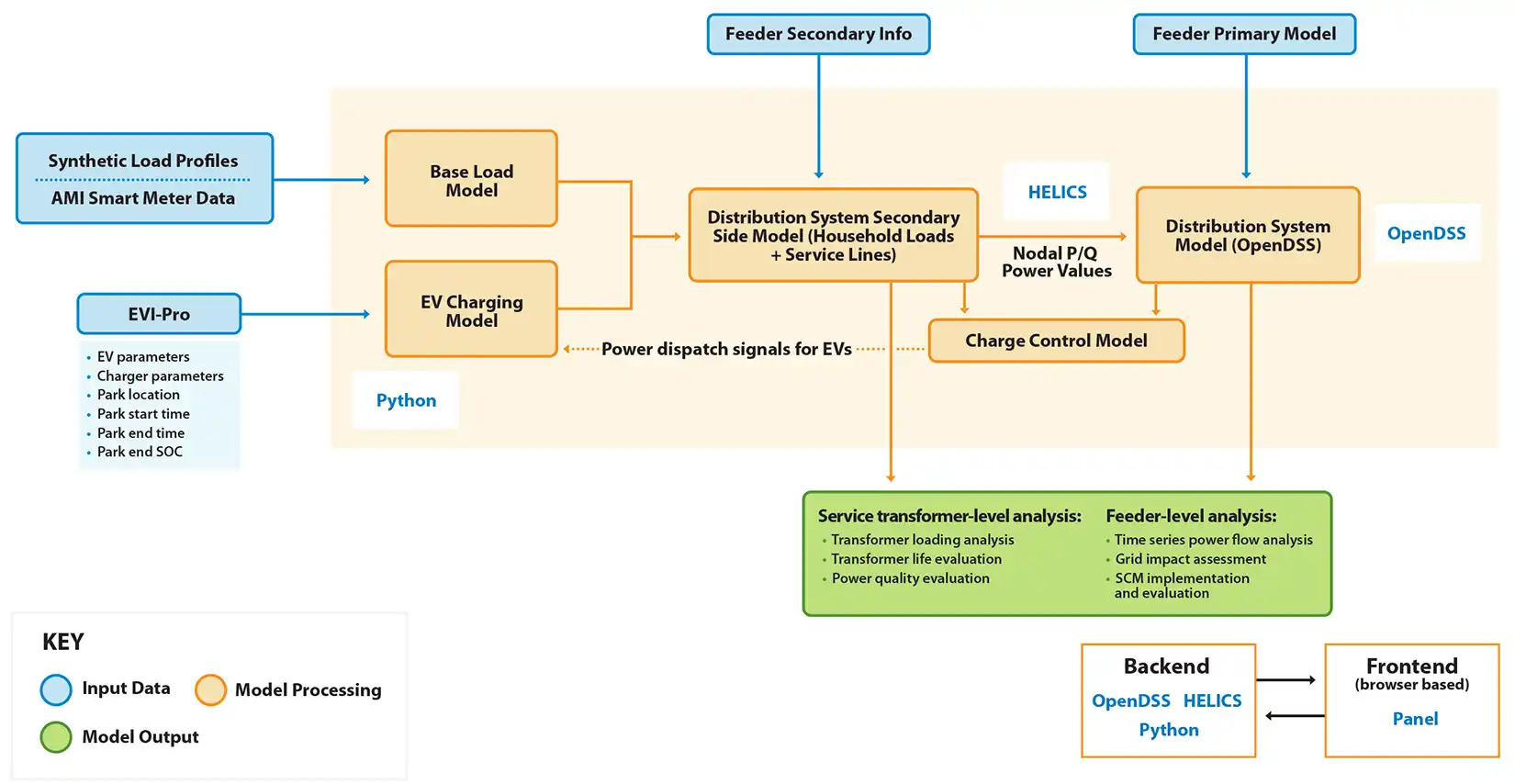EVI-DiST: Electric Vehicle Infrastructure – Distribution System Integration Tool
NLR's Electric Vehicle Infrastructure – Distribution System Integration Tool (EVI-DiST) provides high-fidelity modeling, analysis, and controls for grid-scale electric vehicle (EV) charging integration.
Electric utilities are responsible for delivering electricity to homes and businesses. Utilities are under pressure to rapidly implement strategies for managing grid stress from new energy consumers such as EV charging and data centers. NLR's EVI-DiST tool is uniquely designed to provide the insights utilities need to continue providing reliable and affordable energy to all consumers in the face of growing electrical loads.
EVI-DiST can illustrate EV charging grid impacts at the feeder-level down to detailed secondary models at the residential and commercial building level. It has informed regional grid planning efforts with major public utility companies in more than five states.
Download EVI-DIST
The open-source version of EVI-DIST is available via the GitHub repository.
Key Capabilities and Uses
EVI-DiST can:
- Assess the impact of increasing EV adoption on electrical distribution systems, which provide electricity to homes and businesses
- Provide high-fidelity modeling to utility planners so they can better account for changing power demands due to EV charging
- Allow utilities to evaluate the impact of both fixed control methods, such as time-of-use rate-based charging controls, and algorithms that integrate real-time grid conditions and vehicle responses in a dynamic and adaptive way.
EVI-DiST can evaluate the impacts of EV charging on service transformers (such as loading, winding hot spot temperature, and degradation), on primary feeder component capacities, and on service voltage profiles. It also provides descriptive statistics and allows users to compare the effects of implementing different smart charge management strategies to mitigate peak loads.
Together, these capabilities enable utilities to pinpoint strategies to manage expected potential EV charging loads at scale.

User-Friendly Dashboard
The web-based EVI-DiST dashboard allows users to visualize their data in an interactive format. This open-source, modular, and flexible environment easily integrates with multiple public and commercially available tools, giving utilities a more holistic overview of EV charging impacts.
EVI-DiST currently integrates with EVI-Pro, DiTTo, HELICS, OpenDSS, ResStock, ComStock, CYME, and Synergy.
Publications
High-Fidelity Analysis of EV Integration on Real Utility Feeders in Colorado, NLR Technical Report (2025)
Residential EV Charging Co-Simulation for Distribution Powerflow Impact Analysis, IEEE PES General Meeting (2025)
Evaluating Load Coincidence and Distribution Grid Impacts of Residential EV Charging, IEEE PES General Meeting (2025)
Distribution Service Transformer Loading Analysis With EV Grid Integration, IEEE PES General Meeting (2025)
Analyzing Residential Charging Demand for Light-Duty Electric Vehicles in Colorado, NLR Conference Paper (2024)
Contact
To learn more about NLR's custom analyses using EVI-DiST or to explore related partnership opportunities with NLR, contact [email protected].
Share
Last Updated Dec. 6, 2025
